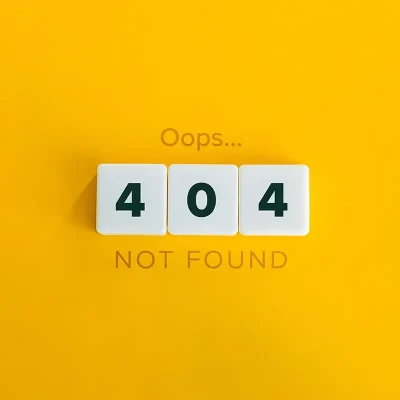Today there are a wide variety of online newsletters with many different ways to design and build them, but which one will allow you to speak to your audience most effectively and get them engaging with your content, find out how to create an email newsletter to increase your sales?
Newsletters are useful to businesses in that they are cost-effective compared to sending physical items. Another advantage of this is monitoring the activity of the newsletter such as what time of day it is opened and how long it is looked at for.
This allows you to learn when your audience are most active with their emails and how you can improve your approach to increase the open rate for the future. An increase in clicks means more engagement with your business which fosters recognition.
In 2019 email marketing is still a marketing channel that is worth investing time in as it continues to deliver a high ROI despite the popularity of social media marketing campaigns that have become more prominent in recent years.
The Newsletter Guide
Step 1: Your audience, lists and the right platform for you
- Setting up a newsletter is the easy part. Building up a list of engaged recipients tailored specifically for the content in your newsletter is going to be a little more difficult. Let’s face it, most people actively avoid ticking that box to sign up for email correspondence so you will need to offer some value as an incentive for them to sign up.
- Once you have built up this list of recipients you must define the audience purpose – a relevant message going out to the right people. IE – a property newsletter going out to all your subscribers interested in this subject. Then you must ask yourself some key questions – how frequently will this newsletter be sent out? How will it benefit your audience? What do you want these newsletters to achieve?
- Then it’s a matter at looking at the best platform for you – but which one is best? Mail Chimp? Campaign Monitor? This important step can define everything about the future success of your campaign so make sure you choose wisely. We’d be happy to guide you through this process at Infotex as we have extensive experience with various email platforms.
Step 2: Write clear headlines
- Creating a simple title that clearly outlines the content of the newsletter helps the reader recognise if the article is of use to them or not. It also helps to verify it’s not spam.
Step 3: Less is more
- With people living busy lives and being fed information from every angle we have less time to read and absorb. Making your newsletter a condensed size, about three to four scrolls will prevent it appearing a challenge to read. If you have a lot to inform your recipient about, adding a Call to Action taking the reader to the full article can be the best of both worlds.
- Arranging text into easy to read chunks or bullet points is another way to make the content easier to read.
- By making each newsletter personalised, showing the recipient’s name and providing a relevant welcoming message can be a good way of directing the content to create a relationship.
- Newsletters also have the potential to be shared with people through other platforms such as social media which lend themselves to short snappy sound bites. So, think of this while composing your newsletter.
Step 4: Design
Should your E-Newsletter be in a plain-text form or more creative like an HTML email? HTML stands for Hypertext Mark-up Language and is the way web pages and email templates are coded so that information such as text is styled and images are added. Plain-text emails on the other hand are written with limited visual options such as bold or italic text.
While it has been said that people on first impressions prefer visual HTML emails the evidence supports a minimal design getting more responses and avoids the spam filter. This is really good news for those of us who ‘don’t pride ourselves on being great designers.
- With many email companies featuring software to prevent spam emails reaching the recipient’s inbox this can in turn stop your content reaching your audience while a plain text version has more promise.
This is not to say that HTML newsletters should be avoided all together, it depends on the audience you are sending it to. For e-commerce companies the HTML format is vital for promoting products and driving sales, one way you can see what resonates best with your audience is to conduct an A/B test - Sending half your audience the HTML style of newsletter and the other half the plain-text style. If you decide to use an HTML format it’s vital that your logo, brand colours and other visual aspects are consistent to help your newsletters appear legitimate, professional and recognisable as you!
Step 5: Optimise
With people using more portable devices like phones and tablets to view their emails it’s crucial that your content is clearly visible on all devices. A way of achieving this is to adopt a single column grid layout. Using a lot of white space can keep the design minimal and making buttons or Call to Actions larger so they are easier to select.Watch your image count. Continuing on from the HTML subject in ‘Step 3 Design’, a lot of images can be seen as spam by email filters.A way of reducing the load time of your newsletter is to compress the size of the images. A quick and easy way of doing this is using www.tinypng.com. Tiny PNG is a website that takes your PNG or JPEG images and reduces the size of them. Including these smaller sized images in your newsletters will make the loading time of your content much faster.
Step 6: Timing

When is the best time in to send people emails for more engagement? The best time depends on the audience the newsletter is aimed at.
- A general guide for business emails is between Tuesday and Thursday during the day as this is when people are less likely to delete their emails. But beware many other companies send their newsletters at this time and yours can become lost in the crowd.
- If a newsletter is intended for a young person the evening could be a better time when they are at home on their phones or computers.
- Unless you are writing about something in the past make sure that your content is new and current. This is so that your newsletters do not appear out of date and are on trend.
- Another consideration is to send out an email in advance. This can be particularly effective for advertising things such as events so more people are aware. Megan Marrs from Wordstream says “While 23% of emails are opened within 60 minutes after being sent, there are some lingers who may not check out your email until a day or two later.”
Step 7: Social media
- By using different social media platforms to promote your newsletter or including sharing links within your newsletters is a way of distributing content with an audience you might not otherwise have got in touch with.
Summary
KNOW YOUR AUDIENCE. Everyone’s newsletter will be different depending on the demographic. From the time you send your newsletter, to how many images you include, always create your content with your audience in mind. If you are unsure what will work best, try an A/B test to see how people respond and alter accordingly.
For an easy to use mail system it may be worth having a look at Mail Chimp and Campaign Monitor. And, if you need further help with your newsletter why not call one of our team on 01394 615615 who are more than happy to help get you started or answer any queries.


